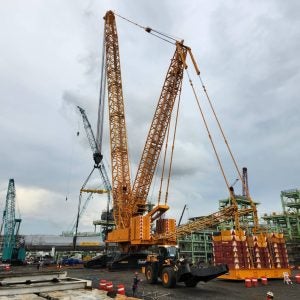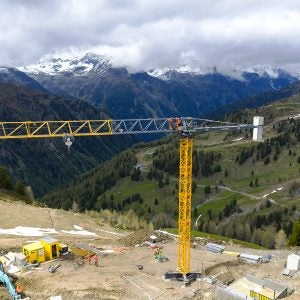As we prepare for ConExpo, many of us will be looking to the Americas for an answer. It’s a region we cover regularly in our market reports. In this issue, Liliam Molina takes an in-depth look at the Spanish-speaking countries of the region. We’ve also recently covered Brazil, Canada, and the USA in region reports. And in this issue, Zak Garner-Purkis has written the first of an occasional series of news in-depth pieces, looking at data from our analysts at Construction Intelligence Centre (www.construction-ic.com) on the broader economy and its impact on the construction equipment sector.
In his first piece, Zak looks at the US market and finds that the country is on track for steady growth. Construction spending overall is at its highest level in four years, with spending on residential construction at its highest since 2008.
While these residential and commercial projects are the mainstay of many in the industry, the energy sector, whether fracking in the Bakken, oil sands in Alberta, or the growing wind energy sector, is also powering the North American market, as we saw in our December region reports from the US and Canada.
In Brazil, we’ve seen recently how stadium building, ahead of the football World Cup and Olympics, has given the high end of the sector a boost. The government’s PAC stimulus programme, while not quite living up to all its promises, and moves to replace favelas with more formal low cost housing, have helped the lower end of the sector. And the discovery of vast oil and gas resources offshore promise more growth to come.
In this issue, Liliam Molina looks beyond Brazil, to the Spanish-speaking countries of the region. In Mexico, the government has promised an extensive public works programme. At the same time, the continued growth of the country’s cross-border trade with the USA is boosting industrial construction. Elsewhere in Central America, the expansion of the Panama Canal continues to bring a steady stream of work.
Further south, in the North Andean countries of Venezuela and Colombia, the energy sector, both in terms of extraction of hydrocarbons and electricity generation, is delivering steady work for many bigger companies. And, again, government spending on infrastructure and housing is both boosting the construction sector and improving people’s daily lives.
The southern tip of the continent is still growing. In both Chile and Peru, declining metal prices have slowed the rapid pace of development, but both countries are still growing and, with pressure from the mining sector, increasingly buying modern cranes.
Overall, the Americas have not reached the rolling boil of 2006-2007; but, I think many of us would rather see the steady heat we have today, than the boiling over that came in 2008-2009.






